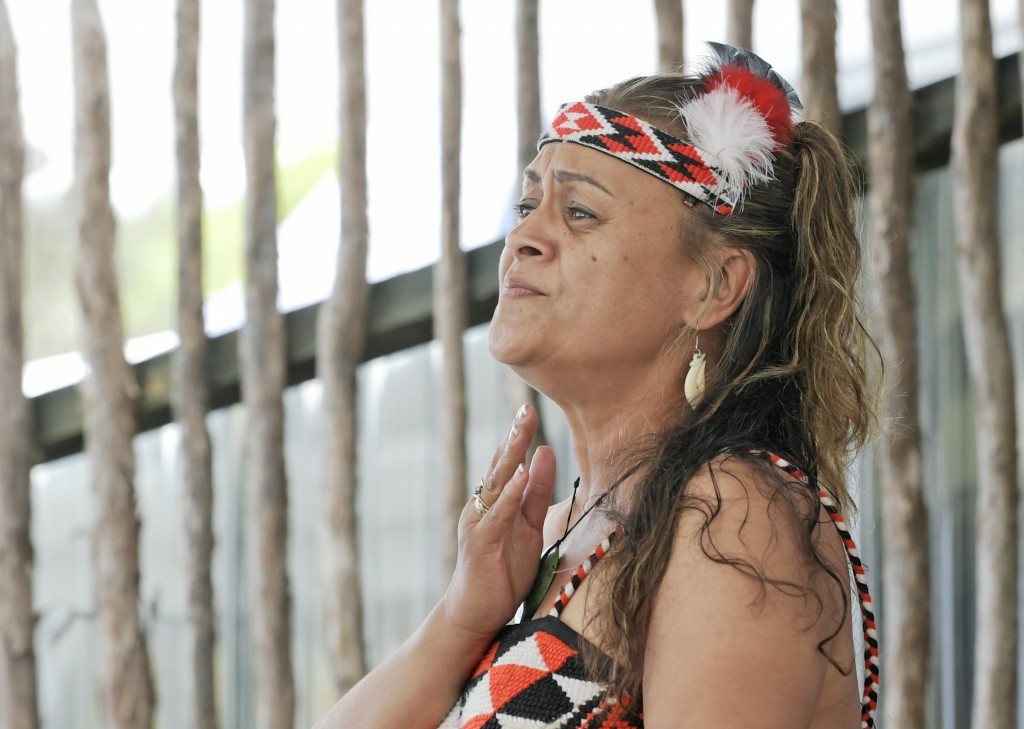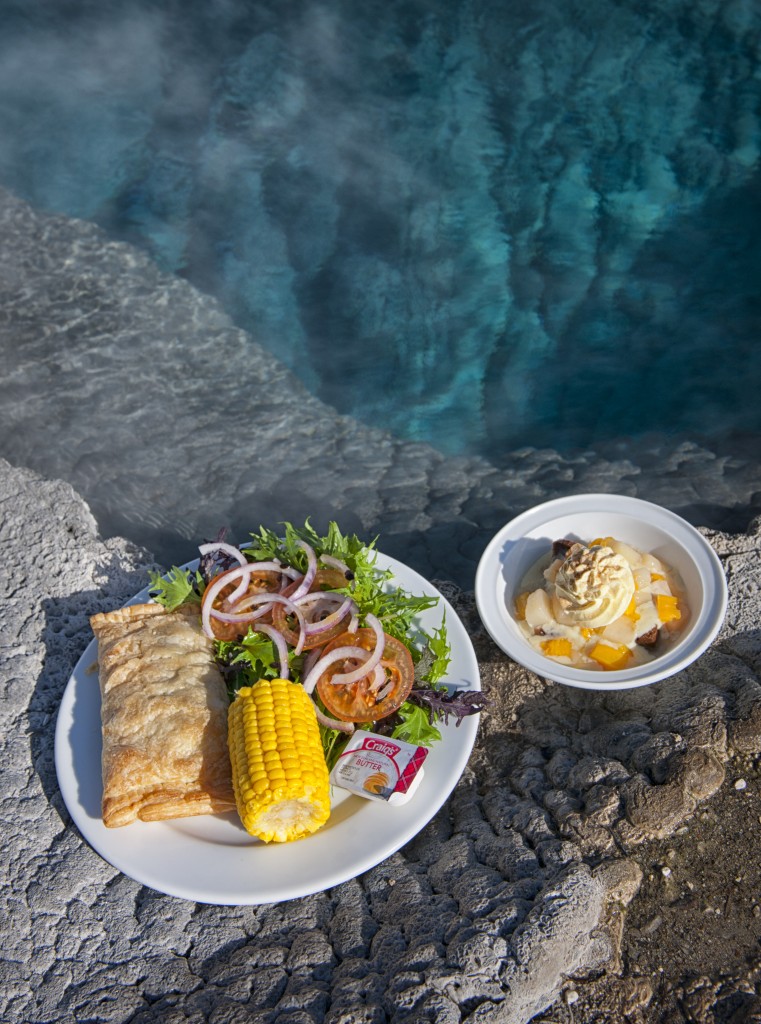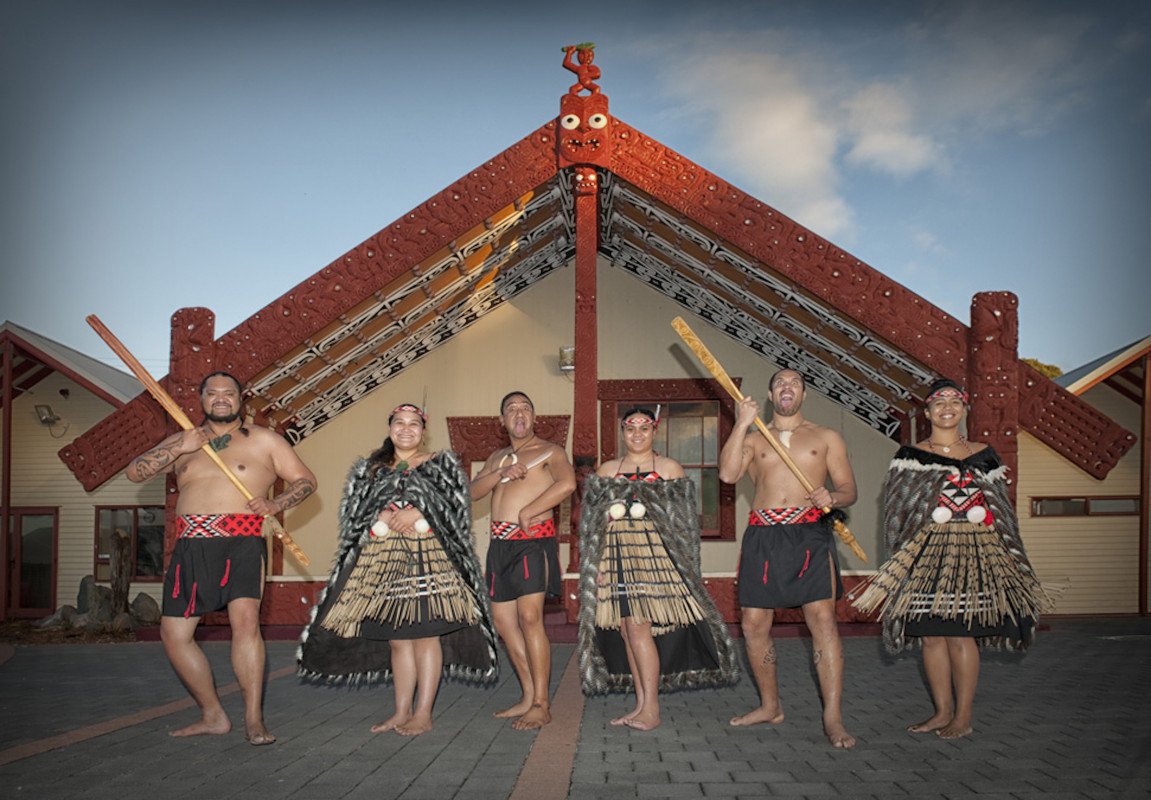Entering a real Māori village is a once in a lifetime experience that gives you an inside glimpse into the unique customs and traditions of Māori culture. For many mindful travellers, a little preparation does go a long way so learning a bit about what to expect will help you understand your experience and make the most of this privilege. Here are 5 important customs to know about before you enter a real Māori village.
The Pōwhiri
A pōwhiri is a traditional Māori welcome ceremony that involves speeches, dancing, singing and the hongi and welcomes you into the heart of the Māori community. It usually begins outside of a marae (Māori meeting grounds) but pōwhiri can take place anywhere a host wishes to welcome a group of people, for example at school grounds to welcome new students. In the past, the pōwhiri process developed as a way of checking whether people were friends or foes.

Being welcomed to a marae is a sacred tradition and unique part of Māori culture.
The Challenge
A wero is a Māori challenge, also known as a taki. It is performed by Māori warriors at a pōwhiri to test the intentions of visitors – by wielding weapons and laying down the challenge, a token, such as a small branch for visitors to pick up and show they come in peace. So, remember to show that your intentions are good and accept the peace offering if a challenge is presented to you.
The Haka
When you witness a live haka, be prepared for a powerful and emotive experience that will stay with you long after it’s over. An ancient Māori war dance, the haka is traditionally performed by men before going to war and is a commanding display of a tribe’s pride, strength and unity. Wrist-slapping, foot stamping, tongue thrusting, eye bulging – it’s all part of the fascinating and fierce tradition that is still used today during Māori ceremonies, and celebrations including birthdays and weddings. The haka is also performed during cultural performances which is included in our Guided Tour.
The Hongi
The hongi is an ancient and revered Māori greeting and can be translated to the sharing of breath – a beautiful and intimate gesture of two people pressing their noses and foreheads together. If you are invited to share in this sacred act, then it signifies that you are no longer a visitor and have become a part of the whānau (family).
The Hangi
If you’re lucky enough to partake in a hangi, then you’re in for a real feast that includes ingredients like chicken, beef, potato, kumara, and carrots. The hangi is roughly translated as an earth oven – a traditional Māori cooking method that involves preparing food in an underground pit oven. Remember that it’s important to wait to eat until a blessing has been made by your host. We are blessed with geothermal resources here and offer a hangi meal or hangi pie in our on-site café that you can book online to receive 10% off the standard price.

A hangi pie meal for you to sample and enjoy
Key terms at a glance
Karanga (Calling)
Marae (Māori Meeting Grounds)
Pepeha (Introduction)
Pōwhiri (Welcome)
Mihi (Speeches)
Hongi (Sharing the Breath of Life)
Haka (War Dance)
Kaumatua (Elders)
Waiata (Songs)



